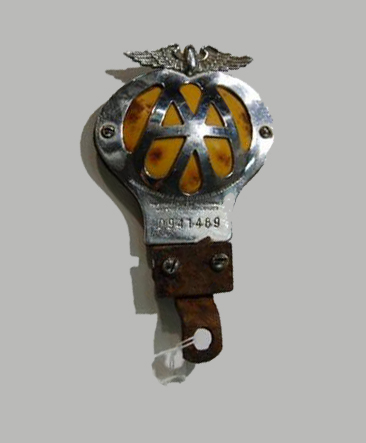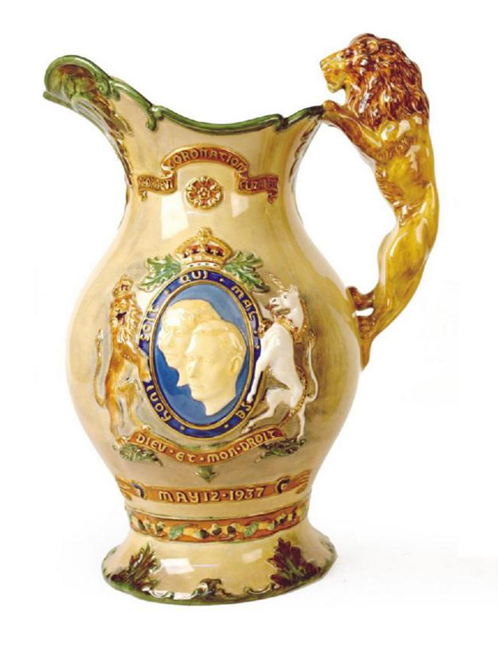Learn about antiques and collectables...
Click on a category below to show all the entries for that category.
Learn about and understand the items, manufacturers, designers and periods as well as the specialist terms used in describing antiques and collectables. Either click one of the letters below to list the items beginning with that letter, or click on a category on the left side of the screen to list the items under that category.
Car Badges
The first car badges were issued by the Automobile Association in Great Britain in 1906, following the formation of the association in the previous year.
The purpose of the AA was to educate drivers about road law, create and provide road maps and provide a meeting place where members could meet socially and no doubt talk about their automobiles. The AA also acted as a lobbying group to push for improvement of the abysmal roads, and lifting the restrictions on the speed limit which had been set to a maximum speed of six kilometres per hour on country roads and three kilometres per hour in built-up areas by the Locomotives on Highways Act of 1895.
The RAC (Royal Automobile Club) of Great Britain had been founded in 1897 but did not introduce their first badge until 1907 when Edward VII became their patron, and the first word in their name became "Royal".
Badges were designed to be attached to the bumper bar and were designed to be durable as they would be likely to be exposed to all weather conditions, so most had a chrome plated and enamel finish.
The Australian automobile associations followed the lead of their UK counterparts, with the Automobile Club of Victoria, the forerunner of the RACV) issuing badges in 1909, the RACWA in 1910 and the RACQ in 1911. The New South Wales motoring organisation, the NRMA was not formed until 1923 and NRMA badges were issued in the following year.
As well as the automobile associations, badges were issued by vehicle manufactures, owners car clubs and other clubs and associations.
Commemorative Ware
Commemorative ware comprises items that are made to commemorate an event within a short time, before or after its occurrence.
Manufacturers have never been slow to exploit the commercial possibilities afforded by the tourist trade, or by events of national or even local interest, and souvenirs and commemorative ware offer the collector a wide and varied field.
Although commemorative pottery was known to exist from the reign of Queen Elizabeth I, the industry really got under way with the invention of transfer printing in the 1750s. George Ill's jubilee in 1809, the death of Princess Charlotte in 1817, and George IV's coronation, were among the earliest events to be commemorated on a large scale by the ceramics industry.
Thereafter coronations, royal weddings, births, jubilees, etc have all been memorialised on china. In the Victorian period commemorative wares were produced in ceramic, glass, wood, papier-mache, stone, metal, ivory, and many other materials.
Much commemorative ware is based on important events - coronations, weddings, anniversaries, visits - in the lives of the British Royal family. There were wares made for the coronation of Edward VI in 1902, and in 1935 there was a great commemorative burst for the silver jubilee of George V and Queen Mary. When George VI and Queen Elizabeth were crowned in 1937 there were at least six 'only authentic' souvenir booklets, quite apart from the official guides. There were also pencils in red, white and blue, bearing tiny pictures of the King and Queen or the Union Jack in paper, hats, flags, lapel pins, brooches, cufflinks, models of Buckingham Palace and Windsor Castle, diaries, tablemats, napkin rings, spoons, and ashtrays. The romance and subsequent marriage of Prince Charles and Diana in 1981 produced a spate of commemorative ware, as did the wedding of Prince William and Kate Middleton in 2011.
Doulton & Co were one of the major producers of ceramic items. Other producers in this category include Moorcroft, Pratt , Royal Winton, Aynsley and Paragon. Staffordshire potteries poured out a stream of commemoratives.
Cruise Line Memorabilia
Mementoes of luxury cruises can give modern collectors a fascinating insight into the golden age of sea travel.
The development of the steam engine influenced ships even more than trains. It led to an explosion in ship building in the mid-19th century, when ships were mainly used for transporting mail. By the turn of the century large, often opulent, cruise liners were being built by vast shipping companies such as the Cunard Line and its competitor, the White Star Line, owned from 1902 by J. Pierpont Morgan’s International Mercantile Marine company. Ships included the Olympic, Titanic, Lusitania and Mauretania.
Another surge occurred after the 1920s and 1930s, when the Normandie, Queen Mary and Queen Elizabeth were built. Used as hospitals during wartime, they played host to many of the wealthy and famous during peacetime.
The great ocean liners were matchless symbols of leisurely luxury. Their heyday was in the 1920s and 1930s, before World War II blighted international travel and before the increasing range, sophistication and affordability of air travel in the 1960s and 1970s virtually killed the passenger trade for ships.
Some of the most glamorous destinations were in the Orient, but the journey from Europe to the USA (or vice versa) was the most famous and the most lucrative sea route. The fastest liners took four days to do the Atlantic Crossing, so obviously they could not compete with aeroplanes in terms of speed.
The ocean liners sold souvenirs of the voyage to the passengers, always with the name of the ship prominently displayed. These included posters, prints, photographs and postcards, toys and models, miniature lifebuoys, as well as mugs, ashtrays and paperweights, all emblazoned with the company's name and badge or a picture of the liner involved.
However, passengers would take their own souvenirs from the voyage, and these unofficial mementoes included anything that could be smuggled off the ship, from pieces of cutlery or crockery, passenger lists, wine lists, concert programs and other pieces of printed ephemera that reflected the glamour and fun of an ocean cruise.
Shipping memorabilia attracts collectors of all ages and from all walks of life, and it is easy to get started, because even those with little money and storage space can collect ephemera.

